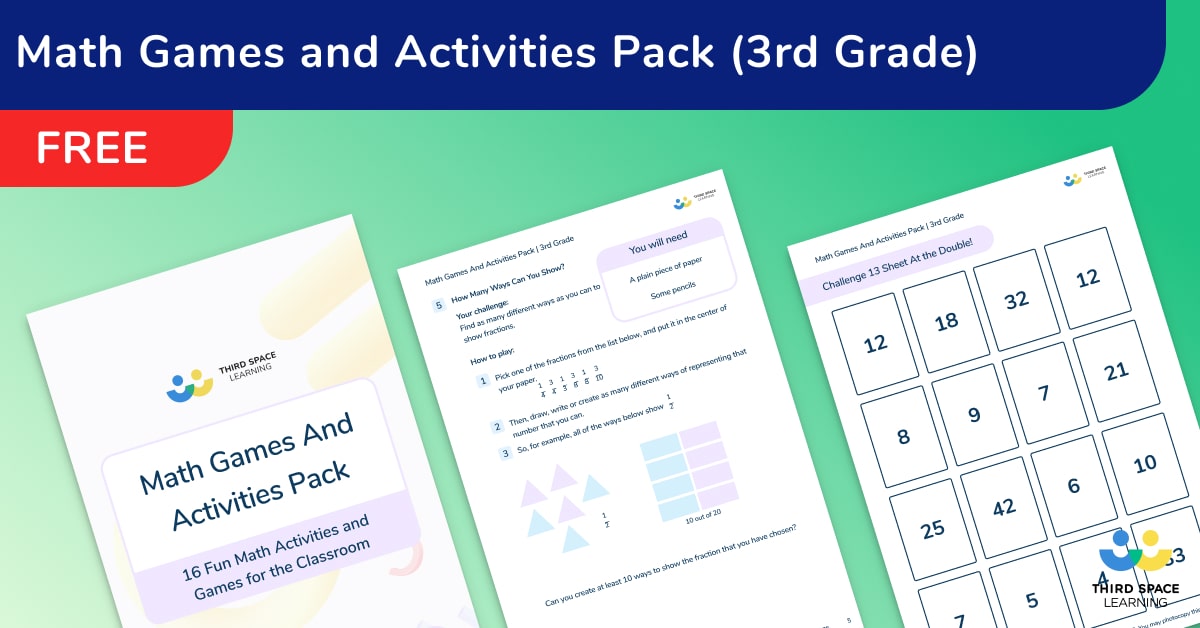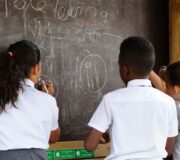3rd Grade Math | Toolkit For Teachers And Parents Of 8 & 9 Year Olds
The math that 3rd grade students learn in elementary school varies slightly from state to state, depending on the curriculum your district follows. Here we guide you through the basics of what you need to know to support a child in math in 3rd grade, with a consideration of state differences.
Whatever the math curriculum your district uses, 3rd grade students across the country will broadly be expected to learn the same knowledge and skills by the end of their 3rd grade math lessons.
We’ve been giving math tutoring for many years so if you’re a teacher wanting to learn more about 3rd grade math or a parent of a 3rd grader wondering how to help your child with math at home, we can help. Read on to find out what you need to know.This article is part of our series designed for parents and teachers supporting home learning and looking for home learning packs during the Covid-19 pandemic.
16 Fun Math Games and Activities Pack for 3rd Grade
Ready-to-go engaging math games and activities for 3rd grade students!
Download Free Now!What the 3rd grade Math Curriculum Says:
As you will know, curriculums vary from state to state, however the learning expectations of 3rd graders, regardless of their location in the US, are broadly the same.
The principal focus of mathematics at the 3rd grade level, according to the Common Core State Standards, is to ensure students become increasingly fluent with whole numbers and the concept of place value. This will ensure students develop a good understanding of multiplication and division and strategies for multiplication and division within 100.
At this stage, students should develop an understanding of fractions and use this knowledge to solve a range of number problems. Students will be expected to compare fractions and are introduced to equivalent fractions.
Teaching should also ensure that students draw with increasing accuracy and develop mathematical reasoning so they can analyze shapes and their properties, and confidently describe the relationships between them.
Topics Covered In 3rd Grade Math
Common Core State Standards
The 3rd grade math curriculum for the Common Core Math State Standards covers 5 main topics, or strands, that stay broadly the same throughout students’ years learning math in elementary school. In addition to these, students are expected to develop ‘Mathematical Practices’, which include skills such as reasoning, analyzing and problem solving.
- Operations And Algebraic Thinking
- Number And Operations in Base Ten
- Number And Operations – Fractions
- Measurement And Data
- Geometry
Texas Essential Knowledge and Skills, or TEKS
For students in Texas, the 3rd grade math curriculum covers 6 main topics, or strands, that stay broadly the same throughout students’ years learning math in elementary school. Similar to the ‘Mathematical Practices’ in states following the Common Core, students are expected to develop ‘Mathematical Processes’.
- Algebraic Reasoning
- Number And Operations of Whole Numbers
- Number And Operations – Fractions
- Geometry and Measurement
- Data Analysis
- Personal Financial Literacy
Helping your child with 3rd grade math at home
As they progress through elementary school, knowing the best way to give your child help with their school work can prove very difficult as a busy parent. Unless you’ve managed to read every email, leaflet and flier that has been sent out by the school (and assuming that the last two even made it home…) you might find yourself asking questions such as:
What is my child going to be learning about this year?
Will teaching them about it at home confuse them if I do it in a different way to their teacher?
I’m not too sure about fractions or this “new way” to multiply….what do I do to help my child?
In this guide, we list activities that can be used both in the classroom and from home, so that if you’re reading as a parent, you can consolidate and support your child’s learning in a fun and engaging way.
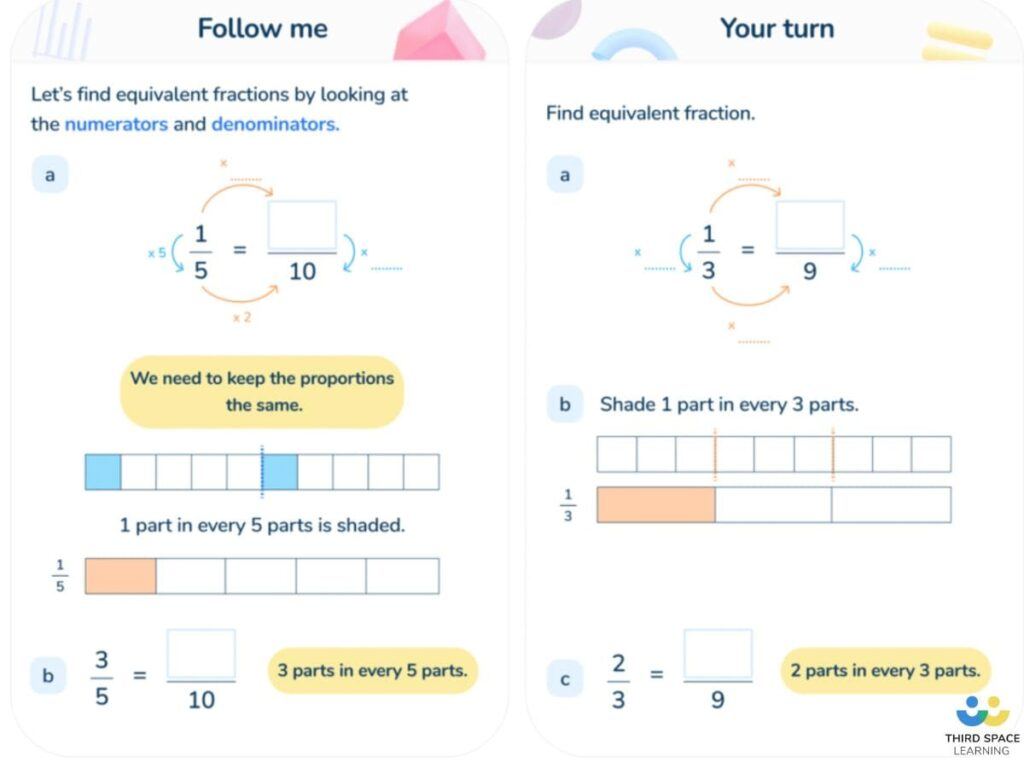
The Transition from 2nd Grade to 3rd Grade
The transition from 2nd to 3rd grade is more challenging as it is also a transition from lower to upper elementary, so your child may find that math is becoming more of a challenge.
You may start to notice frustration with some of the harder topics (even if your child has been a math whiz so far).
But don’t panic!
This is a common occurrence among 8-year-old children, especially when it comes to math.
One of the most important things you can do as a parent at this point in your child’s mathematical development is to keep their enthusiasm going, especially in the face of any mind boggling math problems that may be making an appearance.
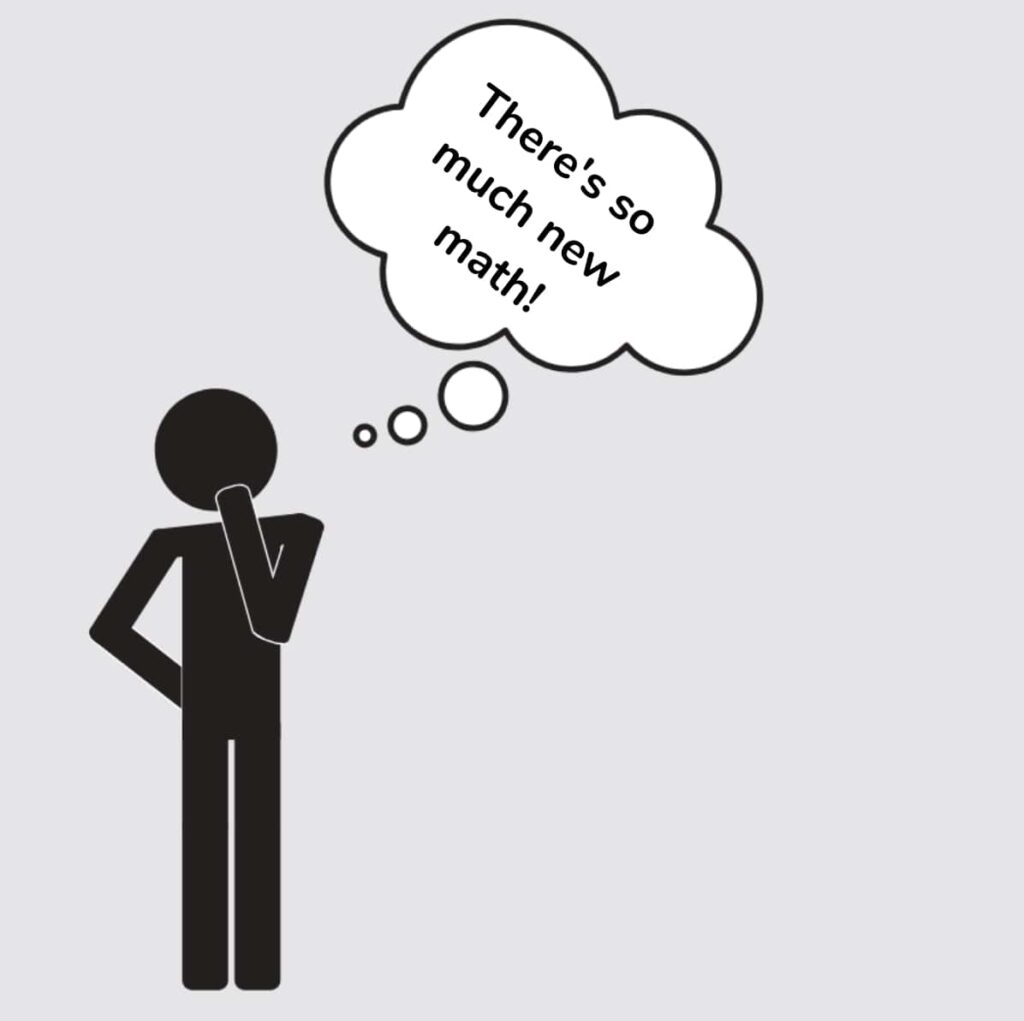
Number in 3rd Grade Math
The Common Core State Standards says that children in 3rd grade will learn to:
- Fluently add and subtract multi-digit numbers within 1000 using strategies based on place value
- Multiply one-digit whole numbers by multiple of 10 using strategies based on place value
- Recognize the place value of each digit in a four-digit number (thousands, hundreds, tens, and ones) (TEKS only: recognise the place value of each digit up to 100,000)
- Use place value understanding to round multi-digit whole numbers to the nearest 10 or 100
Helping At Home With 3rd Grade Number and Place Value
Understanding the concept of place value supports all math learning in elementary and is something we recommend you ensure your students are secure in. For parents, you can help your child from home to consolidate their understanding.
Make sure when you’re practicing place value with your child you always have a place value chart to hand as in the image below. It looks simple but it just helps to bring children back to the facts rather than panicking!
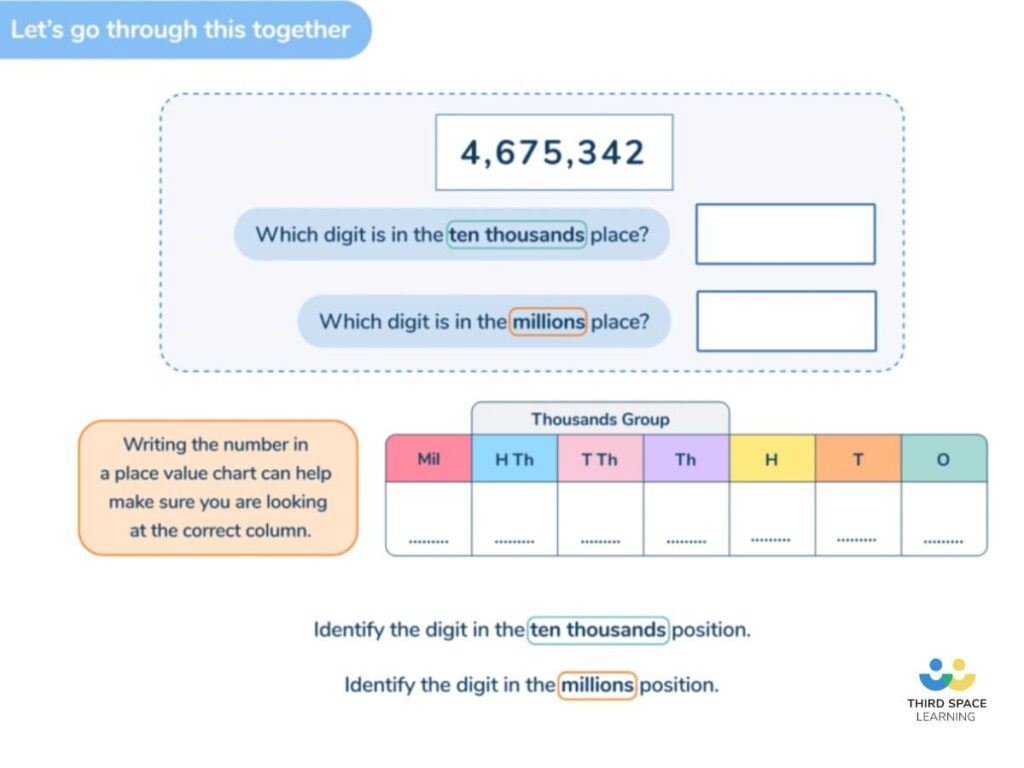
One of the best resources for this is this free downloadable place value grid which takes no time at all to make and then you can physically manipulate the numbers to show their place value.
For a bit more fun, you could also try these place value games or take a look at this list of our favourite third grade math games.
3rd Grade Number and Place Value Activity
Don’t be afraid to push past the millions either.
They are too tough to use in sums, but many children reach the end of elementary school with very little knowledge of what happens after the millions and billions.
Why not try looking up the biggest numbers you can find and counting how many zeroes they have?
Taking away the mystery from what lies beyond the millions makes three- and four-digit numbers look easy in comparison.
Besides, who doesn’t want to know what a googolplex is? Math for your 3rd grader can be interesting for you as well!
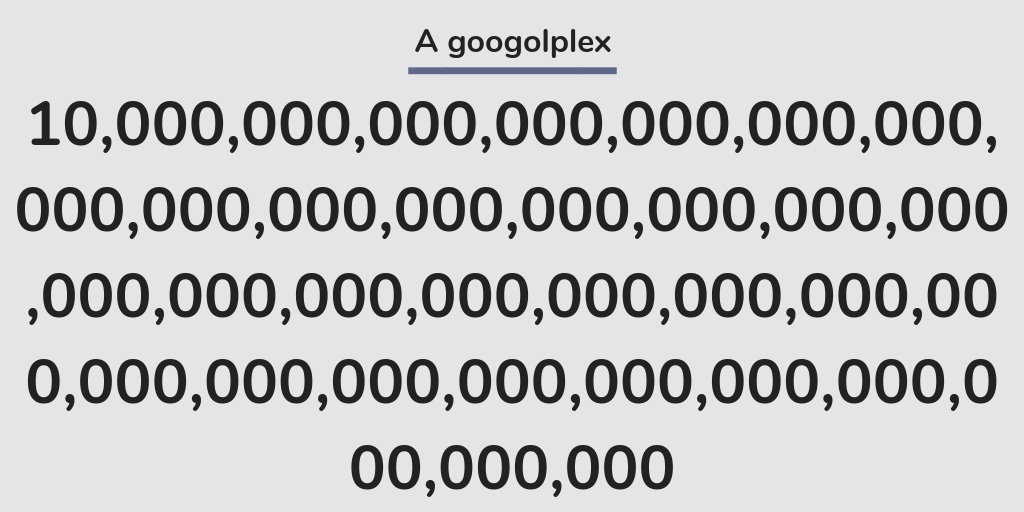
Answer: It is a 1 followed by 100 zeros! Try having a race with your child to see who can write out a googolplex in all of its glory!
Operations: Addition and Subtraction in 3rd Grade Math
The Common Core State Standards recommends that 3 graders learn to:
- Fluently add and subtract within 1,000 using strategies and algorithms based on place value
- estimate and use inverse operations to check answers to a calculation. Decide if an answer is reasonable using mental math and rounding.
- solve addition and subtraction two-step problems in contexts, deciding which operations and methods to use and why. Represent these problems using equations with a letter standing for the unknown quantity.
In addition to the standards mentioned above, the Texas Essential Knowledge and Skills also expect students to be able to determine the value of a collection of coins and bills.
Helping at Home With 3rd Grade Addition and Subtraction
At this age, your child will notice that numbers seem to just get bigger and bigger, so you need to make sure they are comfortable in dealing with them.
Involving them in major purchasing decisions is a great way to get started. While you’ll always have the final say, showing your child that big numbers have a use in everyday life will help to make math more concrete and in turn, easier to grasp.
Just make sure they add up everything on your shopping list – be it real or imaginary.
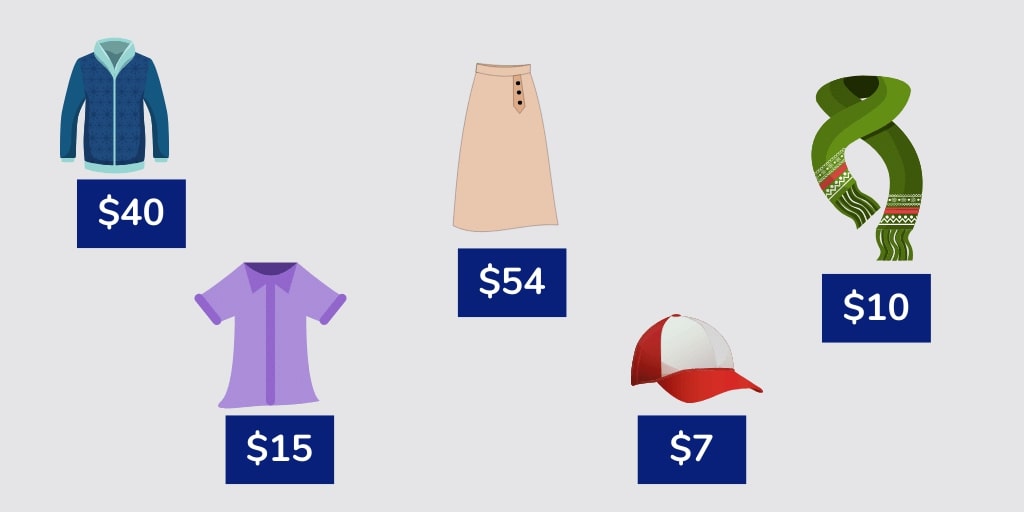
3rd Grade Addition and Subtraction Activity
Questions you can ask to stimulate further 3rd grade addition include:
- How much would it cost to buy all the things on their list?
- How could they make the money?
- How many hours would it take to earn the total?
This is a fun but effective approach to switch your child onto the real-life applications of math (as well as some of the problem-solving skills that entrepreneurs need).
You might end up becoming the silent partner in your child’s new dog-walking business, but hey, it’ll be worth it for the incredible progress in math!
Operations: Multiplication and Division in 3rd Grade Math
The Common Core State Standards says that children will learn to:
- Interpret products of whole numbers
- Interpret quotients of whole numbers
- Use multiplication and division to solve word problems
- Understand division as an unknown factor problem
- Fluently multiply and divide within 100 using strategies based on place value
- Know from memory all products of two one-digit numbers
- Recognize and use factor pairs and commutativity in mental calculations
- Solve two-step problems using all four operations, and represent using a letter standing for the unknown quantity.
In addition to the standards mentioned above, the Texas Essential Knowledge and Skills also expect students to be able to represent multiplication and division using arrays, strip diagrams, and area equations. Your child will be introduced to the standard algorithm to multiply 2-digit by 1-digit numbers.
Helping at Home with 3rd grade Multiplication and Division
You would be forgiven for thinking that teachers in lower elementary school seem to have an obsession with multiplication facts.
The truth is, that helping your child to learn these facts is never a waste of time. By the end of 3rd grade, if your child has a secure knowledge of all 12 times tables they will be much better equipped to learn all the cognitively more challenging multiplication and division skills of upper elementary school, not to mention fractions, ratio and proportion as students prepare for middle school and beyond.If you’re looking for ideas on how to start, I recommend you take a look at this article on how to use a multiplication chart, our guide to the long division method, and this fab selection of multiplication games which give lots of practice opportunities.
Fractions in 3rd Grade Math
The Common Core State Standards says that children will learn to:
- Understand a fraction 1/b as the quantity formed by 1 part when a whole is partitioned into b equal parts
- Understand a fraction a/b as the quantity formed by a parts when a whole is partitioned into b equal parts
- Understand and show fractions on a number line
- Compare and find equivalent fractions using a number line or visual fraction model
- solve simple measure and money problems involving fractions and decimals to two decimal places.
Getting Kids Started With 3rd Grade Fractions
Dreaded fractions! If there’s one word that seems to send elementary school students (and parents) running for the hills, it’s fractions.
But you will be pleased to hear that they don’t have to be scary. They simply look a little different from the kind of math that your students have learned so far in their school career.
Get the fractions vocabulary right first
First and foremost, it’s a good idea to revise key vocabulary on this topic. Once that is secured, it’s one obstacle that is then out of the way, and you will be able to move onto the more challenging stuff! As a parent, you can revisit and consolidate this at home.
Here are some key pieces of fraction terminology to get you started:
| Numerator | The number at the top of a fraction |
| Denominator | The number at the bottom of the fraction |
| Proper fraction | A fraction that is smaller than 1 (like 1/2) |
| Improper fraction | A fraction that is bigger than 1, and has a numerator that is greater than the denominator. (like 3/2) |
| Mixed number | A fraction that is greater than 1, and has a whole number and a fraction (like 1 1/2) |
This vocabulary should make it much easier for your students to access fractions.
At this age, the 3rd grade curriculum requirements focus on ordering fractions, which is simple once you know your way around a basic fraction.
3rd Grade Fractions Activity
Here’s an easy activity to make sure your students’ relationship with fractions gets off on the right foot. If you are a parent, this can easily be done at home, too!
Step 1: Grab a length of string and hang it up somewhere around your classroom or home to form a clothesline.
Step 2: On pieces of paper or card, write down a series of fractions beginning at 1/10 and ending at 10/10.
Step 3: Ask your students to hang them on the clothesline in order. If they get stuck, you can remind them that it really is as simple as looking at the numerator when the denominator is the same.
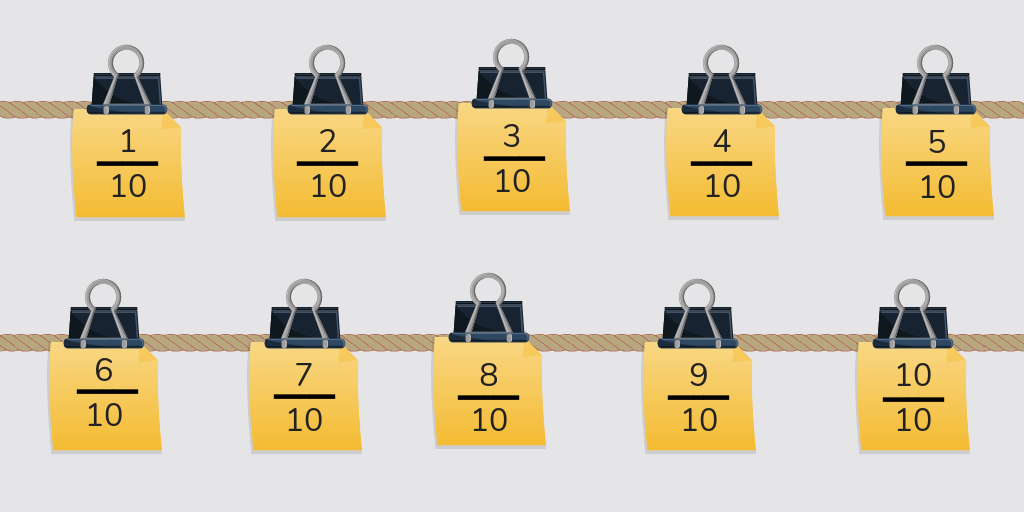
Visualizing each of the fractions in order will help your students to remember how to do this in the future, even when a clothesline isn’t available!
3rd Grade Fractions Challenges
Active learning, even when it only involves a small amount of physical activity, is one of the best ways to make sure your students enjoy the math that they are doing.
An active way to help them understand equivalent fractions is by creating and exploring a fraction wall!
Don’t worry, creating a fractions wall doesn’t mean you’ll need to do some interior design in your classroom. It just consists of a colorful diagram which is an easy way to understand how different fractions can have the same value.
It’s a simple but effective visual representation – helpful when it comes to breaking down math for 3rd graders!
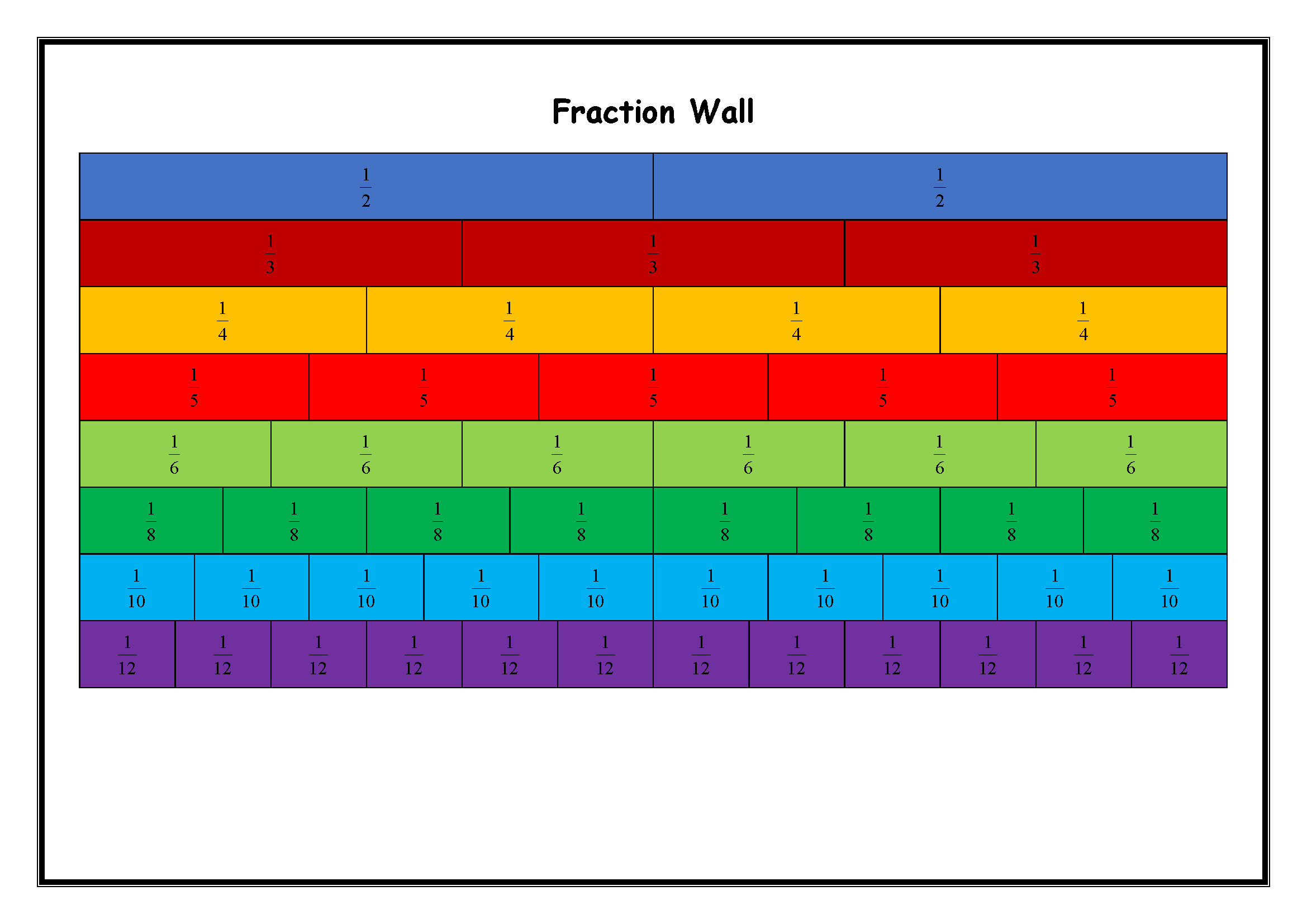
Step 1: Start out by looking at the fraction wall together and seeing how many quarters fit into one half.
Step 2: Challenge your students a little more by moving on to see how many eighths fit into one quarter, then one half.
Step 3: Once your students are feeling more confident, you could cover up parts of the fraction wall and ask them to use the surrounding fractions to work out what’s covered up.
Read more: Fractions for Kids and Parents: Everything you ever wanted to know
Measurement in 3rd Grade
The Common Core State Standards says that children will learn to:
- Tell and write time to the nearest minute and measure time intervals
- Solve word problems involving addition and subtraction of time intervals
- Generate measurement data by measuring lengths
- Understand concepts of area management
- measure and calculate the perimeter of a rectilinear figure (including squares)
- find the area of rectilinear shapes by counting squares, and relate area to addition and multiplication
In addition to the standards mentioned above, the Texas Essential Knowledge and Skills also expect students to be able to determine appropriate measurements for liquid volume (capacity) or weight and use appropriate units and tools.
Helping at Home with 3rd Grade Measurement
One simple thing you can do at home is see how much your child understands about measurements and units of measurement.
To do this, investigate the length, height, weight or capacity of items that you find around the house as appropriate.
Start by checking they know what unit to be using for this kind of measurement. Then they can estimate what they think the capacity or length is going to be.
When dealing with volume, the easiest way to find out the answer is to fill the item with water from a measuring jug.
Accuracy in measurement can take time to develop, so encourage your child to get it right the first time, and if not, to check again until they do. Developing accuracy and the ability to evaluate your own work is a math skill that becomes increasingly valuable in elementary math as the word problems get harder too.
3rd Grade Measurement Activity
First, give your students some practice selecting the appropriate unit to measure different objects. For example, how would you measure the water in a swimming pool? Which is more appropriate: grams, kilograms or liters? Why?
Next, estimate the volume, weight or height of different objects and check your estimations – either using a scale or ruler or researching online.
You could even ask students to design their own dream home or amusement park and have them provide dimensions!
Geometry in 3rd Grade Math: Properties of Shapes
The Common Core State Standards says that children will learn to:
- Compare and classify 2D and 3D geometric shapes, including quadrilaterals and triangles, based on their properties and sizes
- Draw examples of shapes
- Partition shapes into parts with equal areas
- Express areas of shapes as a unit fraction of the whole
3rd Grade Geometry Activities
Shapes can present a very exciting opportunity for children to explore a whole new world of engineering and design.
If you have children who love to build, by channeling this in the right way you can introduce both 2D and 3D shapes to them and you’ll be amazed at how quickly they become engaged with math!
3rd Grade Geometry activity
If you have a box of single-use straws lying around, why not get more out of them by using them for a fun math construction task for your students?
With something as simple as a box of straws you can create a task that will not only engage your students, but help them to learn more about the properties of shapes.
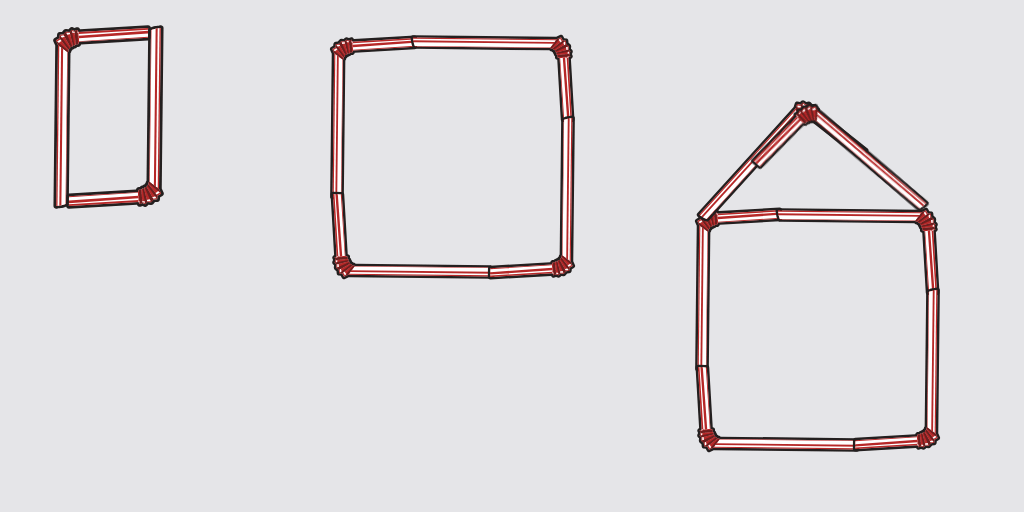
How to use straws to learn about shapes (and master geometric math for 3rd graders!)
This task is equally as great for classrooms as for at home!
Step 1: Locate a box of plastic straws from the back of the cupboard, and some sticky tack to help with the building process.
Step 2: Give this ‘equipment’ to your students, and tell them that they need to make a certain shape. You can begin with simpler 2D shapes such as squares and circles and then move onto more complicated 3D shapes like cubes once they have grasped the concept.
Step 3: Add a timer into the equation to further incentivise focus from your students. If they know that they only have two minutes to create a cube, they will definitely give it their full attention! If you are doing this in class, consider a race or even relay race!
3rd Grade 2D Shapes and 3D Shapes Challenge
If you find that you have young architects on your hands, raise the bar in the creative stakes and challenge your students to create something that requires different 2D & 3D shapes to be combined.
This is a fantastic opportunity for you to bring your students’ interests into the math you are doing with them, without them even realizing they’re doing math!
We never said 3rd grade math couldn’t be fun!
Ideas of things you could ask your students to make include:
- A robot – which child wouldn’t want a straw robot sitting proudly in their bedroom?
- A football field
- A dog/cat (although one that may look a little stiff)
- A house
- A self-portrait!
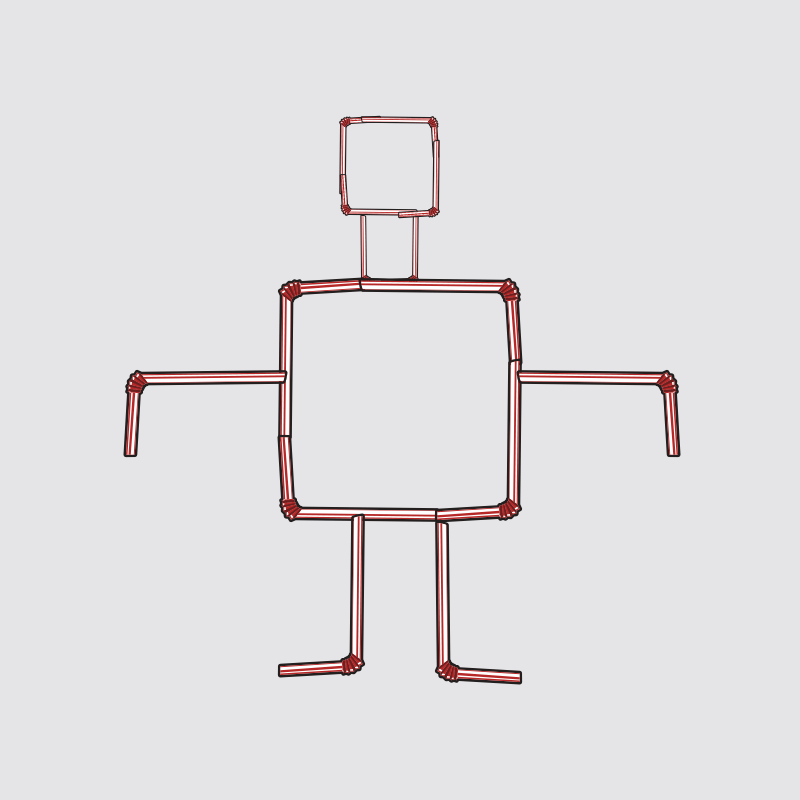
No matter what they decide to make, the key here is to have students talk about the shapes as they use them. This is a fantastic way to discuss shapes and their properties rather than just drilling your students on the names and properties.
A group discussion will lead to more questions which you can then explore with your students – a crucial exercise when it comes to 3rd grade math. This discussion can equally take place between parent and child, which further offers the unique experience of one-to-one discussion that’s not always possible in the traditional classroom format – and as we know here at Third Space Learning, one-to-one is always the best way to learn!
Data in 3rd grade
The Common Core State Standards says that children will learn to:
- interpret and present data using appropriate graphical methods, including picture graphs and bar graphs.
- solve comparison, sum and difference problems using information presented in bar graphs and picture graphs.
In addition to the standards mentioned above, the Texas Essential Knowledge and Skills also expect students to interpret and present data from frequency tables and dot plots and solve one- and two-step problems using data represented on the graphs.
3rd Grade Data Activities
Data analysis might seem like a lofty prospect to an 8-year-old, but this is a great time to introduce children to the various ways data can be presented.
How to get your students engaged with data collection
Concrete examples of what the data represents make graphs much clearer, so dig into issues that children in your class really care about.
3rd Grade Activities: Bar charts, line graphs and picture graphs
Does your class have a fan of dolphins? Set a project to research how many there are in each ocean and plot them on a bar chart.
Are there scientists in your cohort? Grow a plant and plot its height on a line graph.
Got a football fanatic? Work out how many touchdowns were scored last season by each team in the NFL and create a picture graph using team colors.
3rd Grade Math Vocabulary
Finally, don’t forget that even something as simple as reviewing key math vocabulary can help your students to understand what will be coming up throughout the school year.
Here’s a list of some of the essential math terminology your child should know by the end of 3rd grade.
- Round to nearest ten or hundred
- Convert
- Perimeter and area
- Equivalent fractions
- Data representation
- Bar graph
By practicing what these words mean, in the classroom or at home, even if it is just for five minutes per day, your students’ lives will be much easier than if they were to try to cram in all of the words at the last minute.
Working together to tackle rounding and exploring equivalent fractions means that the definition of each word will be much more likely to stick in your students’ long-term memory, and this will stand them in good stead come the rest of the year.
Read more: Free Math Dictionary For Kids
Also in this series…
- 2nd Grade Maths Curriculum Toolkit for 6 & 7 Year Olds
- 4th Grade Maths Curriculum Toolkit for 9 & 10 Year Olds
- 5th Grade Math Curriculum Toolkit for 10 & 11 Year Olds
If you want to know what other math terminology your students will need to learn by the end of elementary school, our free math dictionary for kids has parent and child friendly definitions of all key math vocabulary.
Do you have students who need extra support in math?
Give your students more opportunities to consolidate learning and practice skills through personalized math tutoring with their own dedicated online math tutor.
Each student receives differentiated instruction designed to close their individual learning gaps, and scaffolded learning ensures every student learns at the right pace. Lessons are aligned with your state’s standards and assessments, plus you’ll receive regular reports every step of the way.
Personalized one-on-one math tutoring programs are available for:
– 2nd grade tutoring
– 3rd grade tutoring
– 4th grade tutoring
– 5th grade tutoring
– 6th grade tutoring
– 7th grade tutoring
– 8th grade tutoring
Why not learn more about how it works?

